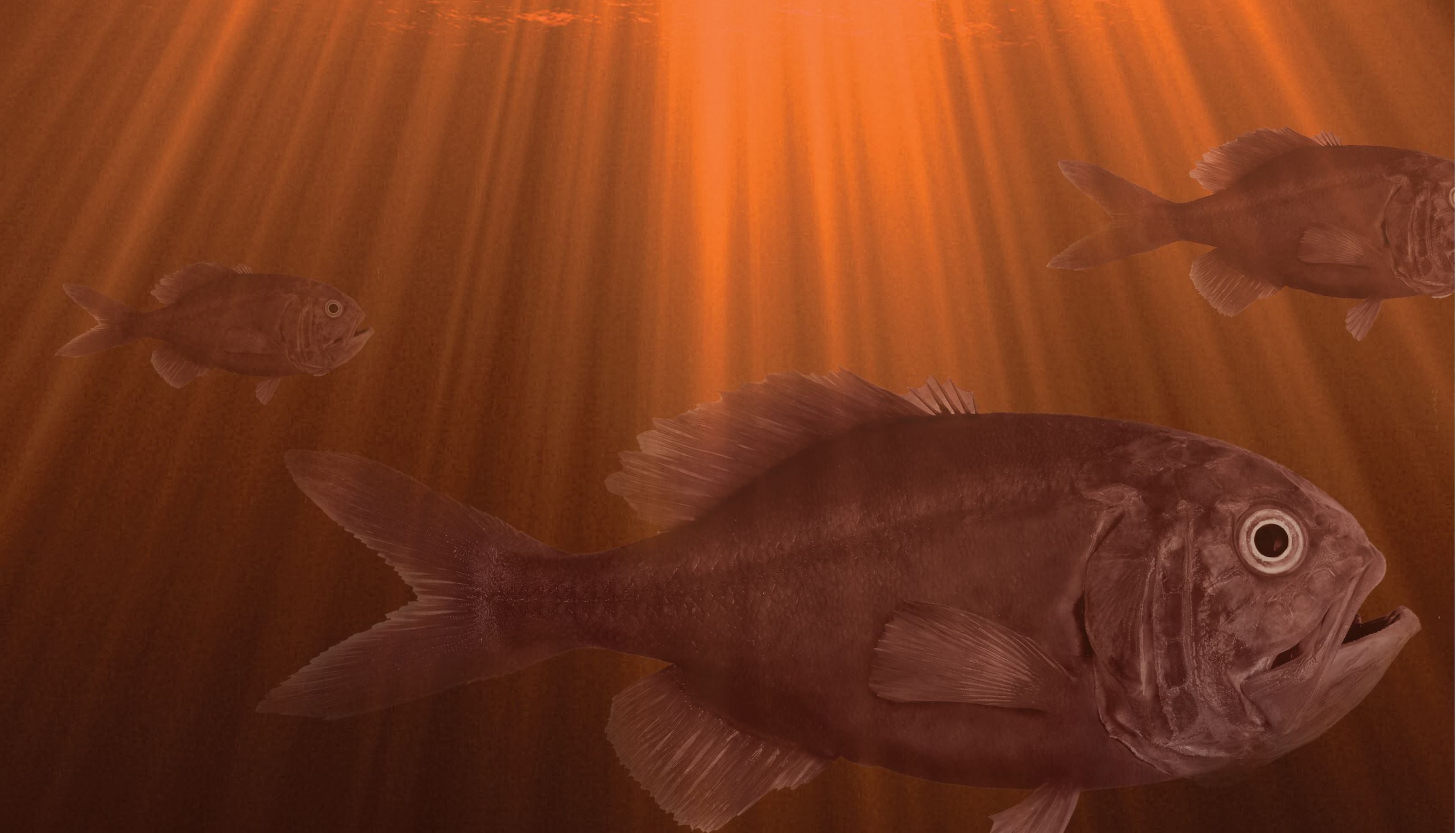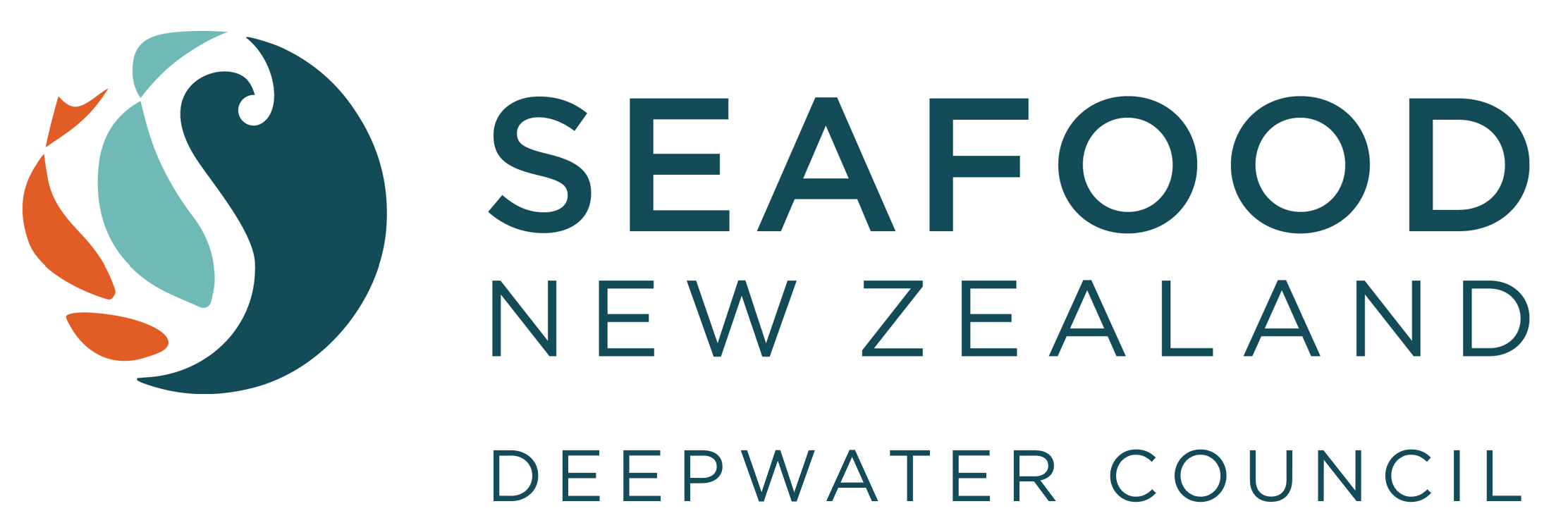
Orange roughy
third surveillance audit 2020
In 2016 three New Zealand orange roughy fisheries (ORH 3B East and South Chatham Rise, ORH 3B North West Chatham Rise, and ORH 7A including Westpac Bank) were certified by MRAG Americas against the Marine Stewardship Council (MSC) Fisheries Standard (CR v1.3) with four conditions.
In 2018 two of the four conditions were closed. These two conditions were closed when the fisheries passed their annual audit in February 2020.
DWG undertakes to make all non-confidential information that is provided to the Conformance Assessment Body (i.e. MRAG) publicly available on this webpage to ensure all documents are easily accessible by all participants.
A summary of the key information from these references can be found in the Progress Against Coral Conditions Report and the Situation Report.
Principle 1
"A fishery must be conducted in a manner that does not lead to over-fishing or depletion of the exploited populations and, for those populations that are depleted, the fishery must be conducted in a manner that demonstrably leads to their recovery."
The intent of this principle is to ensure that the productive capacities of the resources are maintained at high levels and are not sacrificed in favour of short term interests.
Cordue, P.L. (2014). A Management Strategy Evaluation for orange roughy. ISL Client Report prepared for Deepwater Group Ltd. 42 p.
Cordue. P.L. (2019). A 2019 stock assessment of ORH 7A including Westpac Bank. FAR 2019-33, September 2019. 45 p.
Cordue, P.L. (2021) A 2020 stock assessment update of ORH 3B east and south Chatham Rise. 37 p.
Doonan, I.J., Horn, P.L., Baolagain, C.O. and Datta, S. (2018). Age composition of orange roughy from ORH 3B, Chatham Rise, 2016: Mount Muck, Old Plume, Rekohu Plume, and Morgue. FAR 2018-48, November 2018. 15 p.
Doonan, I.J., Roberts, J., McMillan, P.J. and MacGibbon, D. (2018). Review of Challenger Plateau orange roughy abundance surveys 2005-13 and survey design options for future abundance estimates. FAR 2018-57. December 2018. 46 p.
Dunn, M. R. and Doonan, I.J. (2018). Assessment of the Chatham Rise orange roughy stocks for 2017. FAR 2018-59, December 2018. 60.p.
FNZ (2018). Review of Sustainability Measures for the October 2018/19 Fishing Year. August 2018. Orange Roughy, pp. 79-98.
FNZ (2019). Fisheries Assessment Plenary, May 2019: stock assessments and stock status. Compiled by the Fisheries Science and Information Group, Fisheries New Zealand, Wellington, New Zealand. 1637p. Orange Roughy, pp. 800-841.
FNZ (2019a). October 2019 Sustainability Round Decisions. 30 August 2019. Document Number: B19-0373. 196 p.
FNZ (2019b). October 2019 Sustainability Round: Submissions Received 1.
FNZ (2019c). October 2019 Sustainability Round: Submissions Received 2.
Minister of Fisheries (2019). Changes to sustainability measures and other management controls for 1 October 2019. 16 p.
MPI (2008). Harvest Strategy Standard for New Zealand Fisheries. Ministry for Primary Industries. 25 p.
Ryan, T. and Tilney, R. (2017). Biomass surveys of orange roughy spawning aggregations in ORH3B NWCR and ESCR management sub-areas in June-July 2016 using a net attached acoustic optical system. Final Report to Deepwater Group Ltd, New Zealand. 67 p.
Ryan, T., Tilney, R., Cordue, P. and Downie, R. (2019). South-west Challenger Plateau Trawl and Acoustic Biomass Survey June/July 2018. Draft FAR, August 2019. 66 p
Principle 2
"Fishing operations should allow for the maintenance of the structure, productivity, function and diversity of the ecosystem (including habitat and associated dependent and ecologically related species) on which the fishery depends."
The intent of this principle is to encourage management of fisheries from an ecosystem perspective under a system designed to restrain the impacts of the fishery on the ecosystem.
Abraham, E.R. and Berkenbusch, K. (2019). Preparation of data for protected species capture estimation, updated to 2017-18. October 2019. AEBR 2019-234. 490p.
Baird, S.J.; Wood, B. A. (2018) Extent of bottom contact by New Zealand commercial trawl fishing for deepwater Tier 1 and Tier 2 target fish stocks, 1989–90 to 2015–16. New Zealand Aquatic Environment and Biodiversity Report No. 193. 102 p.
Baird, S.L. and Mules, R. (2019). Extent of bottom contact by New Zealand commercial trawl fishing for deepwater Tier 1 and Tier 2 target species determined using CatchMapper software, fishing years 2008-17. September 2019. AEBR 2019-229. 106 p.
Black, J., Wood, R., Berthelsen, T. and Tilney, R. (2013). Monitoring New Zealand’s trawl footprint for deepwater fisheries: 1989-90 to 2012-13. New Zealand Aquatic Environment and Biodiversity Report No. 110. 57 p.
Black, J. and Tilney, R. (2017). Monitoring New Zealand’s trawl footprint for deepwater fisheries: 1989-90 to 2012-13. New Zealand Aquatic Environment and Biodiversity Report No. 176. 65 p.
Clark, M.R., Mills, S., Leduc, D., Anderson, O. and Rowden, A.A. (2019). Biodiversity of Benthic Protection Areas and Seamount Closure Areas: a description of available benthic invertebrate data, and a preliminary evaluation of the effectiveness of BPAs for biodiversity protection. AEBR 2019-227. September 2019. 270 p.
Cordue, P.L. (2019). A 2018 stock assessment of smooth oreo in OEO 4. FAR 2019-28, August 2019.
DOC (2019). Conservation Services Programme Annual Plan 2019/20. Department of Conservation, Wellington. 88 p.
DOC (2019a). Conservation Services Programme Annual Research Summary 2017-18. Department of Conservation, Wellington. 93 p.
Dragonfly (2019). Protected species bycatch 2002-03 to 2017-18.
DWG. (2019). Orange Roughy & Oreo Operational Procedures Version 18.0. 12 p.
FNZ (2019). Annual Operational Plan for Deepwater Fisheries 2019/20. Fisheries New Zealand Technical Paper No: 2019/05. 41 p.
FNZ (2019a). Annual Review Report for Deepwater Fisheries 2017/18. Fisheries New Zealand Information Paper No: 2019/01. 112 p.
Patchell, G.J. (2019). Orange Roughy Fishery Benthic Habitat Mapping ORH3B. Report prepared for Deepwater Group Ltd, January 2019. 28 p.
Principle 3
"The fishery is subject to an effective management system that respects local, national and international laws and standards and incorporates institutional and operational frameworks that require use of the resource to be responsible and sustainable."
The intent of this principle is to ensure that there is an institutional and operational framework for implementing Principles 1 and 2, appropriate to the size and scare of the fishery.
DWG. (2019). Orange Roughy & Oreo Operational Procedures Version 18.0. 12 p.
DWG (2019a). Deepwater Trawl Seabirds Operational Procedures. Version 6.0. 25 p.
DWG (2019b). Deepwater Trawl Marine Mammals Operational Procedures. Version 9.0. 23 p.
DWG (2019c). Deepwater Trawl Reporting Operational Procedures. Version 3.0. 10 p.
DWG (2019d). Deepwater Trawl Vessel Management Plan (VMP) Vessel Specific Procedures for Mitigating Seabird and Mammal Captures for Trawlers.
DWG (2019e). Environmental Liaison Officer’s report – Environmental Training and Liaison for Deepwater Fishing Crew: 2017-18 Report. 5 p.
DWG (2019f). Environmental Risks and Operational Procedures. DW Operators Meeting – Nelson 5th March 2019. PowerPoint presentation prepared by Deepwater Group Ltd
FNZ (2019). Annual Operational Plan for Deepwater Fisheries 2019/20. Fisheries New Zealand Technical Paper No: 2019/05. 41 p.
FNZ (2019a). Annual Review Report for Deepwater Fisheries 2017/18. Fisheries New Zealand Information Paper No: 2019/01. 112 p.
FNZ (2019b). Aquatic Environment and Biodiversity Annual Review 2018. Compiled by the Fisheries Science Team, Ministry for Primary Industries, Wellington New Zealand. 704 p.
Helson, J., Leslie, S., Clement, G., Wells, R. and Wood, R. (2010). Private rights, public benefits: Industry-driven seabed protection. Marine Policy 34, 557–566.
MFish (2009). Fisheries 2030: New Zealanders maximising the benefits from the use of fisheries within environmental limits. Ministry of Fisheries, Wellington.
MFish (2011). Research and Science Information Standard for New Zealand Fisheries. Ministry of Fisheries, April 2011. 31 p.
MPI (2008). Harvest Strategy Standard for New Zealand Fisheries. Ministry for Primary Industries. 25 p.
MPI (2010). Orange roughy Fishery Chapter, February 2010. 48 p.
MPI (2010a). Memorandum of Understanding: Continuing a partnership between the Ministry of Fisheries and the deepwater fishing industry for the management of New Zealand’s deepwater fisheries. 12 p.
MPI (2013a). National Plan of Action to reduce the incidental catch of seabirds in New Zealand Fisheries. 59 p.
MPI (2017). Medium Term Research Plan for Deepwater Fisheries 2018/19 – 2022/23. MPI Information Paper No: 2017/11. 21 p.
MPI (2019). National Fisheries Plan for Deepwater and Middle-depth Fisheries 2019. Fisheries New Zealand Technical Paper No: 2019/03. 37 p.
MPI (2019a). Fisheries Compliance: DW Operators Meeting – Nelson 5th March 2019. PowerPoint presentation prepared by Ministry for Primary Industries.

